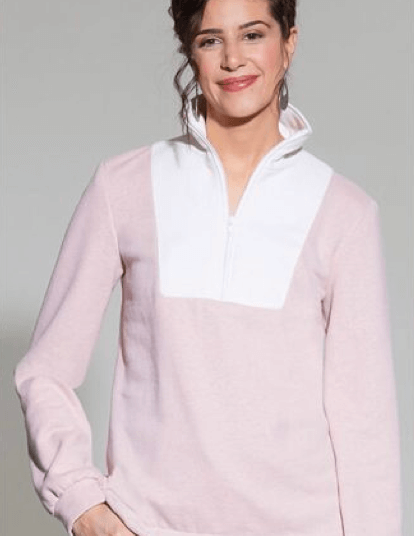
How to Sew Sweatshirt Fabrics
Have you thought about sewing your own sweatshirt, hoodie or cardigan? Sewing allows you to express your creativity. You can add personal touches like embroidery, patches, or unique details to make your sweatshirt one-of-a-kind. You could even make your own Christmas sweater!
Sewing with sweatshirt fabrics can be a bit challenging, as they are typically made of a combination of cotton and synthetic fibres, and can have a stretchy texture. Here are some tips to help you sew with sweatshirt fabrics:
1. Pre-wash your fabric: Sweatshirt fabrics can shrink or change shape during the wash, so make sure to pre-wash your fabric before cutting and sewing.
2. Be mindful of the stretch direction: Sweatshirt fabrics have at least one direction of stretch, the important one is the direction in which the fabric stretches the most. Be sure to lay out your pattern pieces so that the best stretch goes around the body not down.
3. Use a stretch stitch: A stretch stitch is a type of sewing machine stitch that allows the fabric to stretch without breaking the thread. Use a stretch stitch, such as a zigzag or a triple straight stitch, to sew sweatshirt fabrics. Test your stitch on a piece of scrap fabric, making a quick seam to see a) how it stretches and b) whether you can see the threads in from the right side.
4. Use a ballpoint needle: Sweatshirt fabrics are knit fabrics, and can be easily damaged by a regular needle. Make sure to use a ballpoint needle, which is specifically designed for knit fabrics. In a pinch you could use a universal needle!

5. Use a walking foot: A walking foot is a type of presser foot that helps to feed the fabric through the machine evenly, preventing stretching and bunching. A walking foot can be a little expensive but works on a huge range of fabrics giving you extra support and confidence when sewing.
6. Use an overlocker aka a serger: If you have a serger, it can be a great tool for sewing sweatshirt fabrics. The machine can quickly finish the edges of the fabric and create a stretchy, durable seam. If you don’t have one, you can use your regular sewing machine with either a simple zigzag close to the edge of the fabric or an edge-finishing foot which recreates the stitches of a serger, wrapping the raw edge.
7. Consider a knit or stretch fabric stabiliser: A knit or stretch fabric stabiliser is a type of fabric that is placed behind the sweatshirt fabric to help keep it stable while sewing. Perfect for stretchy hems.
8. Cuffs and bands: Sweatshirt fabrics can be challenging to hem, so consider using cuff or hem band pieces to finish the edges instead.
